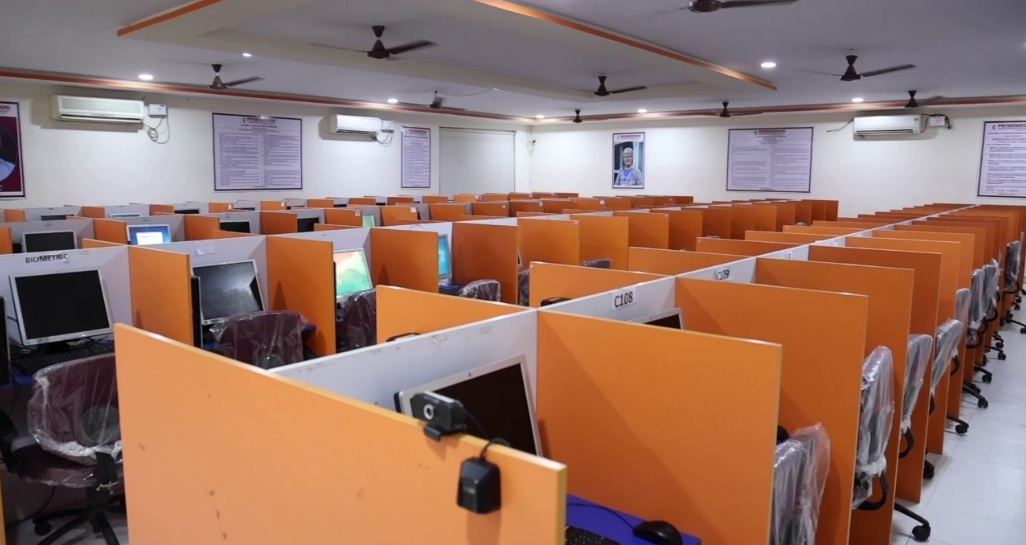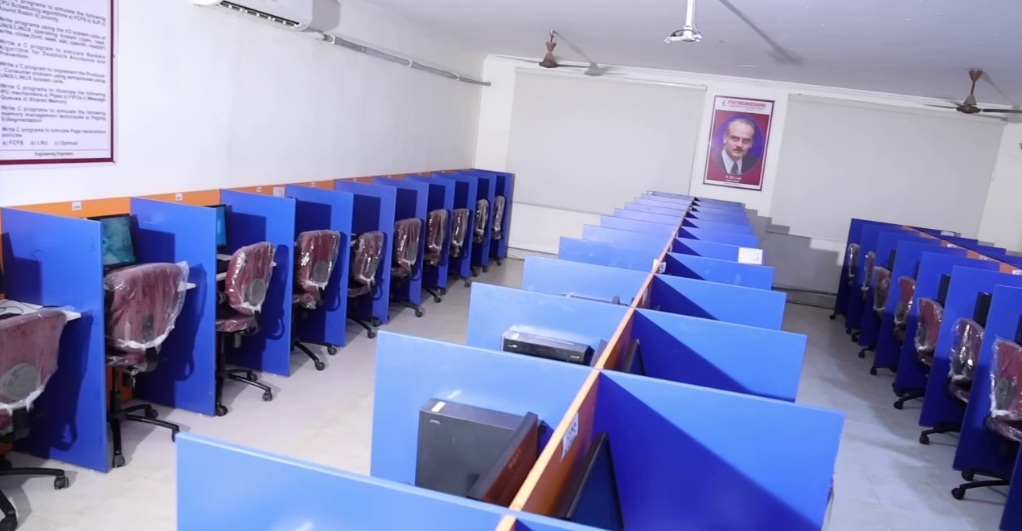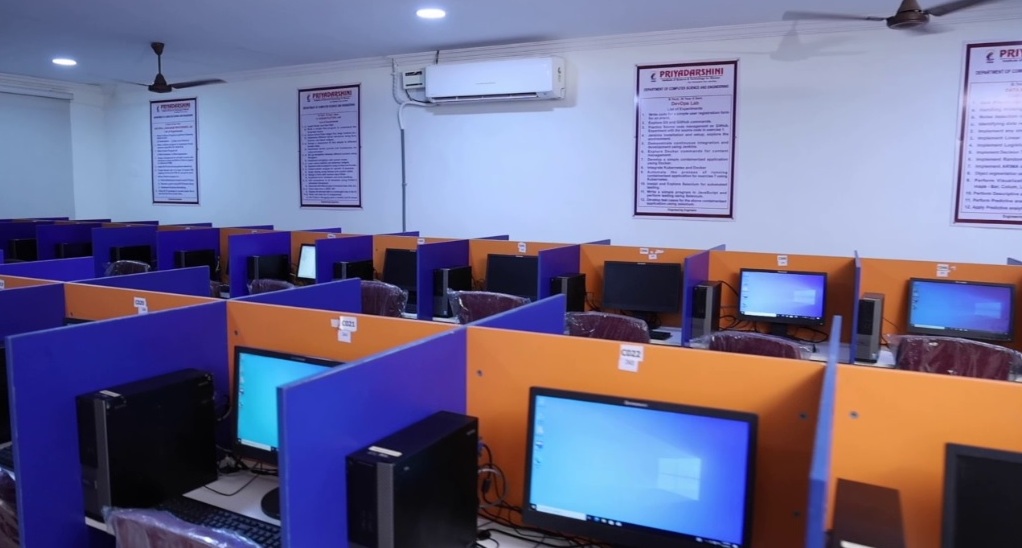CSE-Artificial Intelligence and Machine Learning(AI&ML) Laboratories
"Empowering minds, shaping futures — Priyadarshini College is where learning meets purpose."Programming for Problem Solving Lab
Programming for Problem solving Lab is designed to familiarize students with the basic components of programming, so as to be able to initiate the students into the discipline of Programming Languages. Through this lab students get the ability to design, develop, test and document structured programs in C language. The expectation is that students will become self-sufficient in learning any programming language on their own thereafter

Python Programming

This lab covers core programming basics and program design with functions, Object-Oriented Programming, in-depth data and information processing techniques and high-performance programs designed to strengthen the practical expertise.
IT Workshop
The purpose of this lab is to work on working PC dissemble and assemble to working condition, install LINUX and WINDOWS on the same PC and also enable in drafting professional word documents, excel spread sheets and powerpoint presentations using MS OFFICE.
Data Structures Lab

The main purpose is to study fundamental data structures, their design, implementation, efficiency and understand how the choice of data structures can lead to efficient implementations of algorithms in solving problems.
Operating Systems Lab
The purpose of this lab is to provide a general understanding of the structure and key functions of the operating system. Compare and contrast the common algorithms used for both pre-emptive and non-pre-emptive scheduling of tasks in operating systems, such as priority and performance comparison.

Machine Learning LAB

A Machine Learning (ML) lab is essential for BTech students specializing in Computer Science with AI & ML or AI & Data Science, as it provides a practical environment to apply theoretical concepts in real-world scenarios. The lab enables students to gain hands-on experience with data preprocessing, algorithm implementation, model training, and performance evaluation using tools like Python, TensorFlow, PyTorch, and Scikit-learn. It supports learning through project-based assignments, research, and collaboration, fostering innovation and problem-solving skills. By engaging with real datasets and advanced ML techniques, students become better prepared for careers in data science, AI development, and research, aligning with current industry demands and future technological advancements.
Data Analytics Lab

A Data Analytics Lab is an essential facility for BTech students in Computer Science, Artificial Intelligence & Machine Learning, and AI & Data Science programs, aiming to develop strong analytical and data-driven problem-solving skills. This lab provides students with practical exposure to data collection, cleaning, visualization, and analysis using tools such as Python (with Pandas, NumPy, Matplotlib), R, SQL, Excel, Power BI, and Tableau. It enables students to work on real-world datasets, understand trends, perform statistical analysis, and generate actionable insights. The lab also introduces concepts like data warehousing, data mining, and basic machine learning, preparing students for roles in business analytics, data science, and decision support systems. Through hands-on assignments, projects, and case studies, students gain valuable experience in turning raw data into meaningful information for smart decision-making across various domains.
Database Management Systems Lab
The requirement of modern days is to have an automated system that manages, modifies and updates data accurately. This is achieved by a Database Management System (DBMS) in robust, correct and non redundant way. Through DBMS laboratory, students will get knowledge about the database environment and a way to manage data. Students are made familiar with Oracle Software.

Python Programming Lab

This lab covers core programming basics and program design with functions, Object-Oriented Programming, in-depth data and information processing techniques and high-performance programs designed to strengthen the practical expertise.
Java Programming Laboratory

This lab reinforces understanding of basic object oriented programming concepts (objects, classes and subclasses, methods) and their expression in Java. Students are able to analyze and design a computer program to solve real world problems based on object-oriented principles and able to write simple Graphical User Interface (GUI) interfaces for a computer program to interact with users, and to understand the event-based GUI handling principles.
Natural Language Pressing Lab
Natural Language Processing (NLP) is a field of artificial intelligence that focuses on the interaction between computers and human language. It enables machines to understand, interpret, and generate human language in a way that is both meaningful and useful. Common applications of NLP include speech recognition, language translation, sentiment analysis, and chatbots. By analyzing linguistic data, NLP helps computers comprehend the nuances of language such as context, emotion, and intent, making it a powerful tool in various domains from healthcare to customer service.

Computer Networks Lab

Computer networks are systems that connect multiple computers and devices to share resources, exchange data, and communicate with one another. These networks can range from small local area networks (LANs), like those in homes or offices, to vast wide area networks (WANs), such as the internet. The primary components of a network include hardware like routers, switches, and cables, as well as software that manages data transmission and connectivity. Networks enable users to access shared files, printers, applications, and internet services, playing a crucial role in both personal and organizational computing. The efficient functioning of computer networks is essential for modern communication, business operations, and information exchange.






